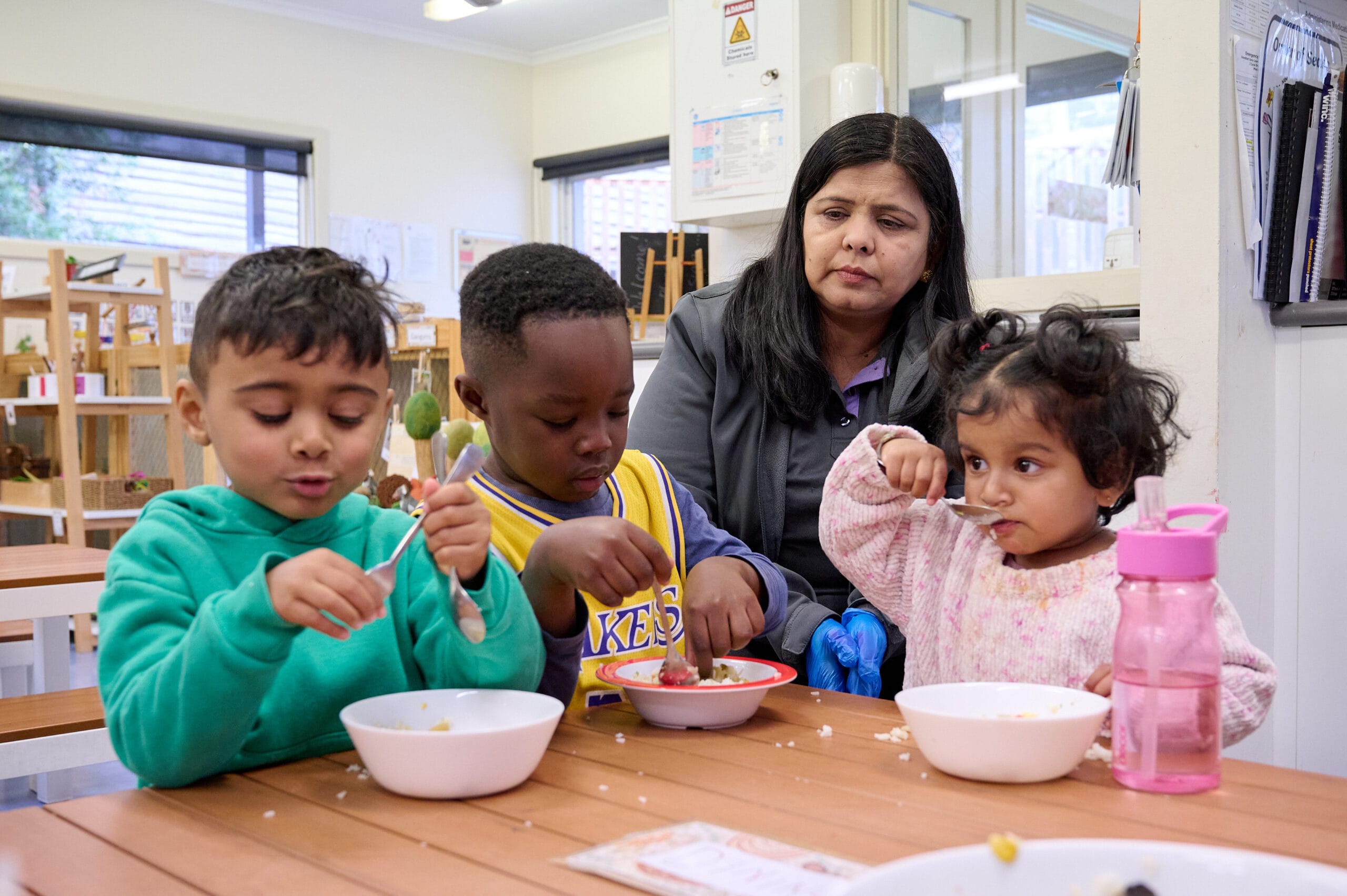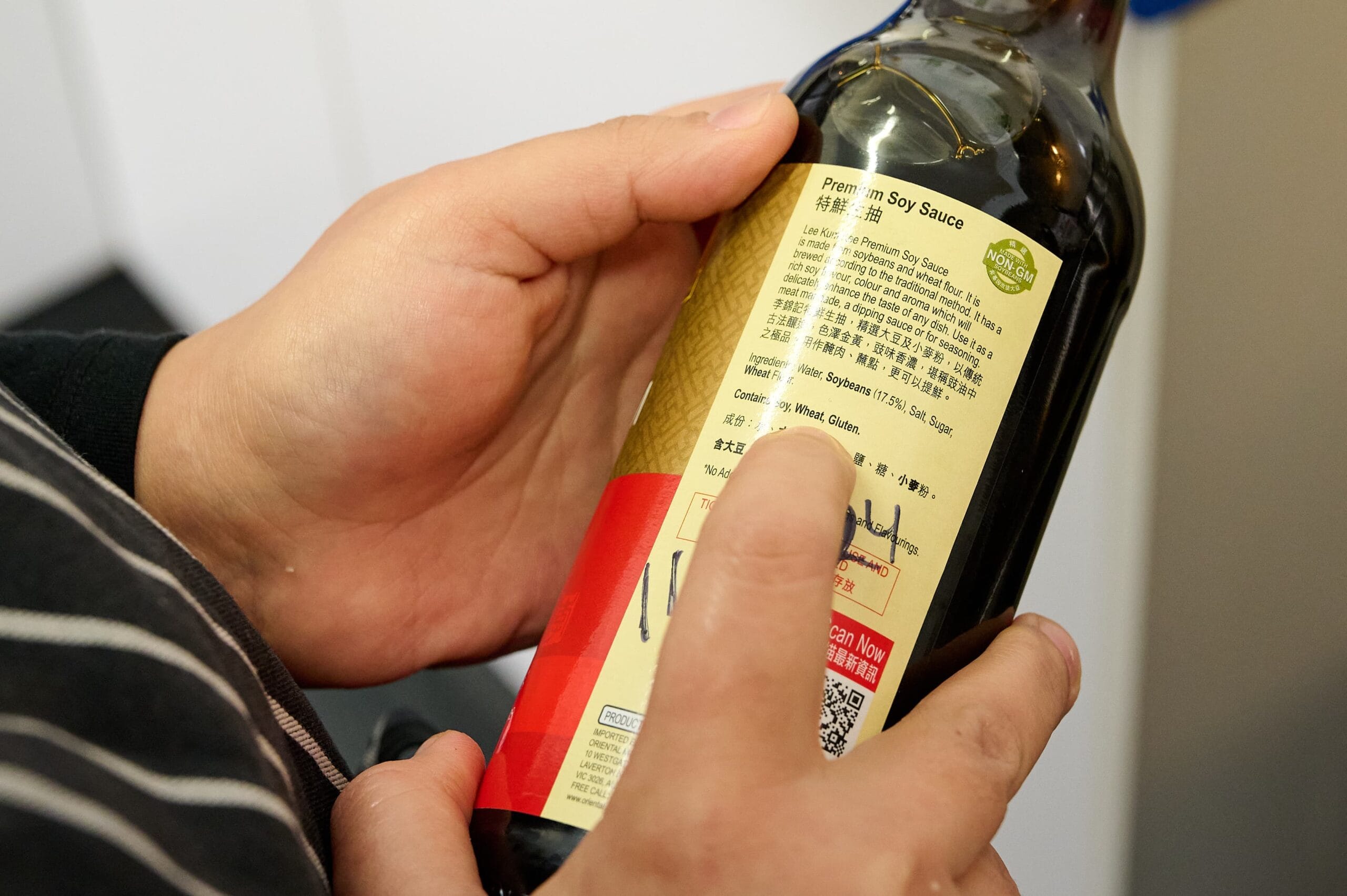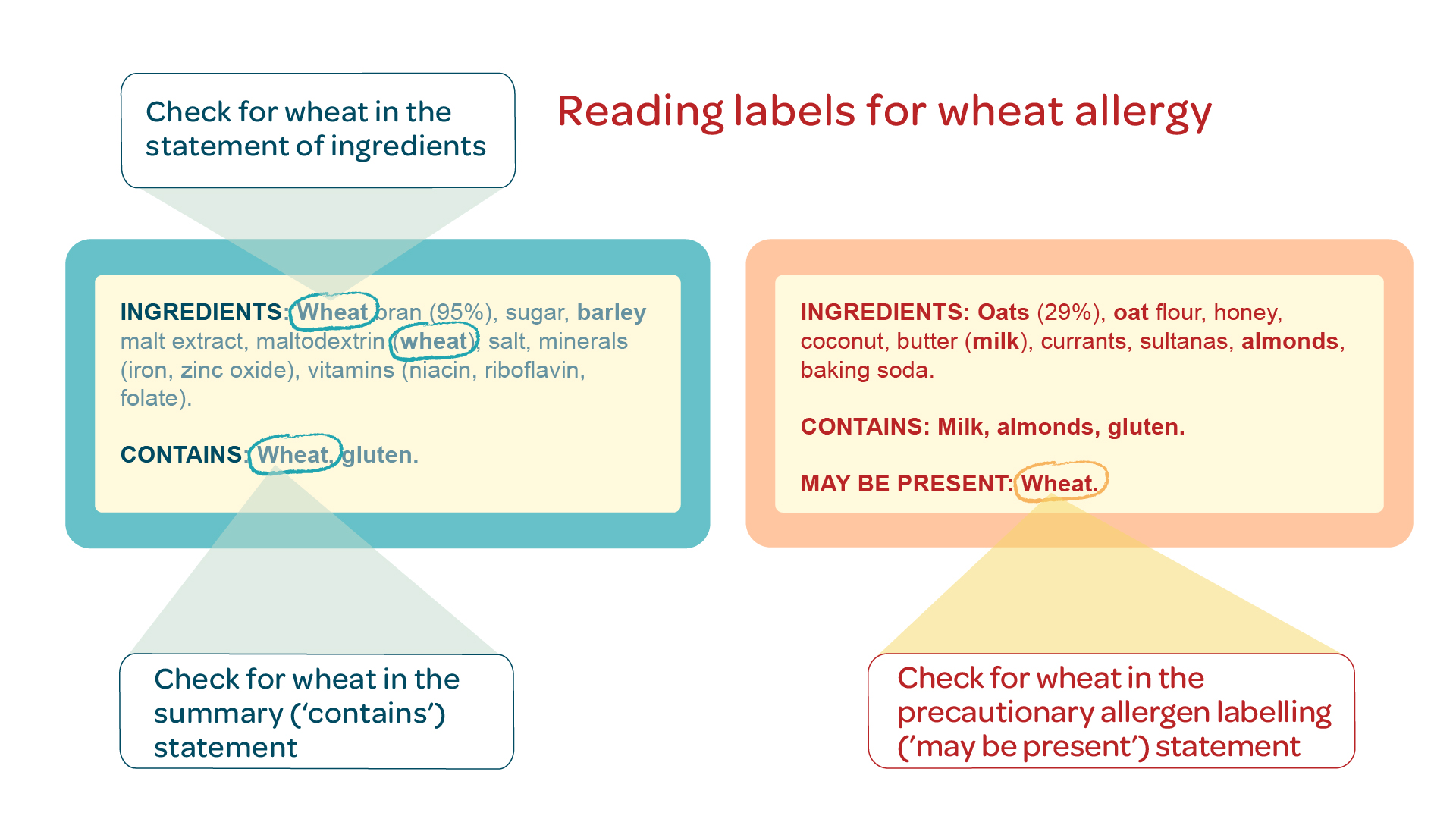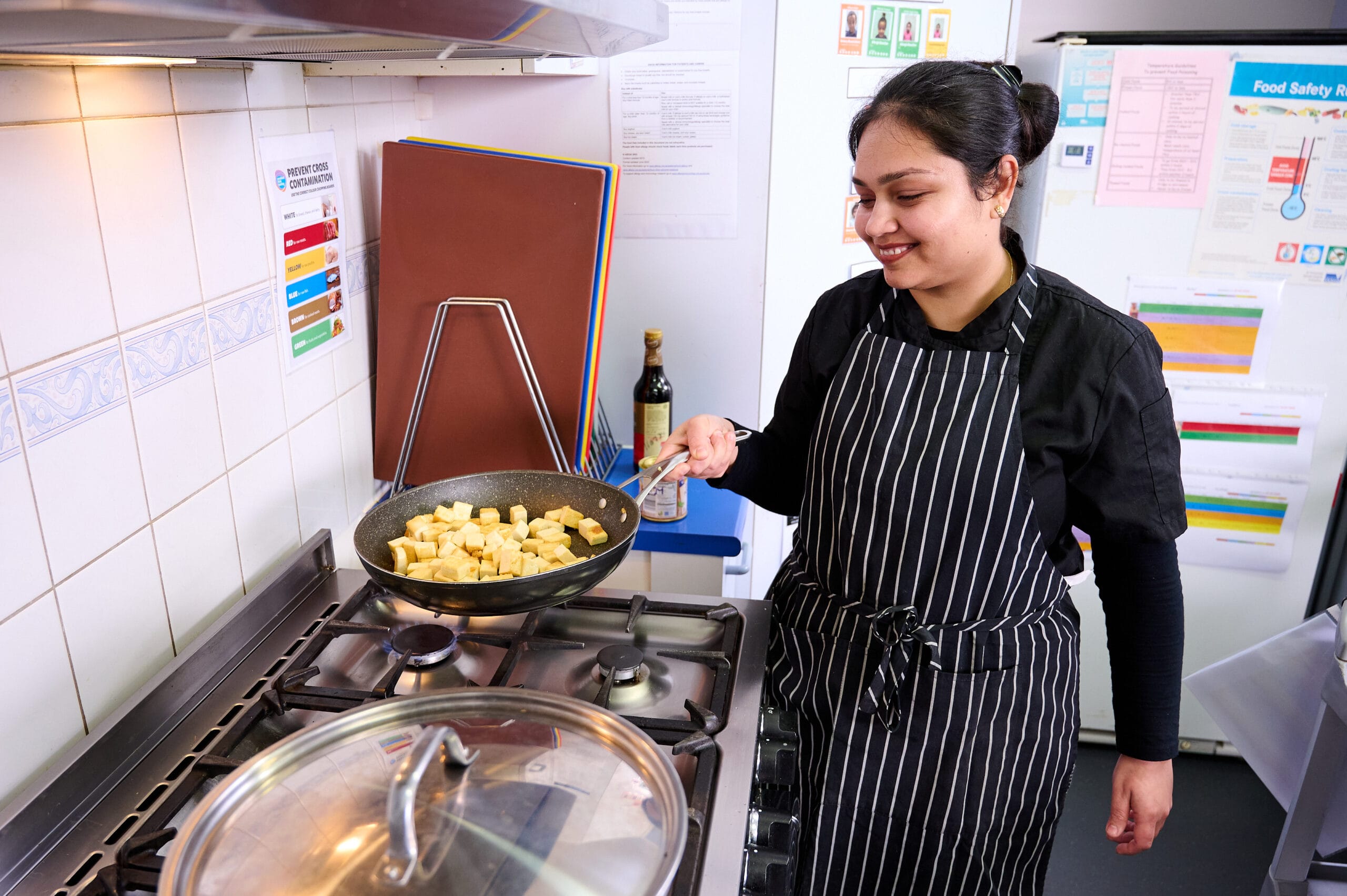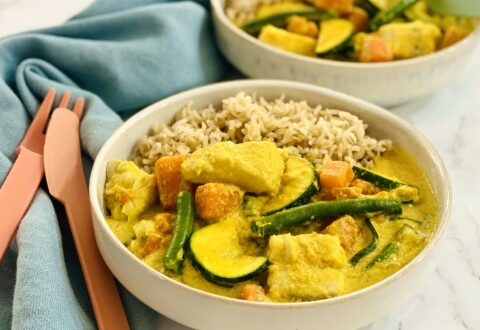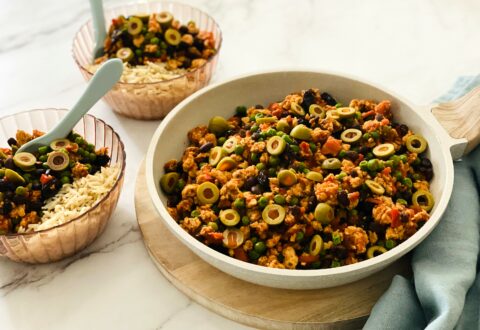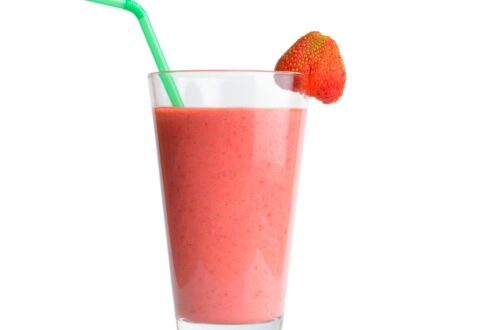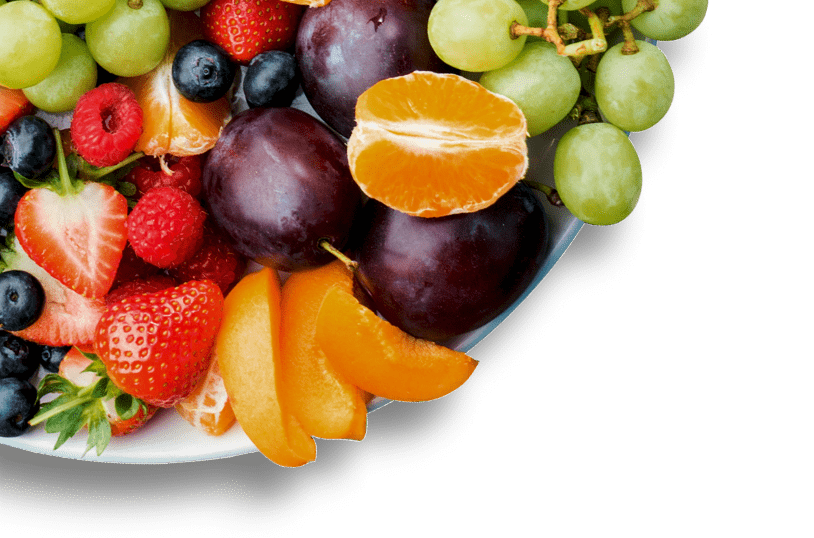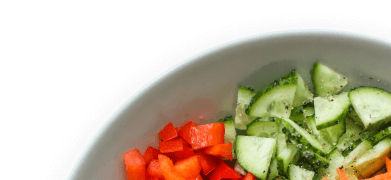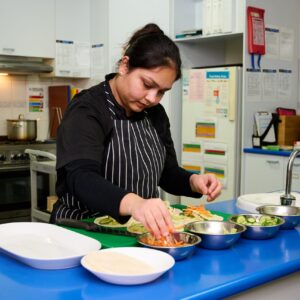Wheat allergy
Wheat based foods contain important nutrients for children’s growth and development. The following information can help you plan your menu while catering for children with wheat allergy.
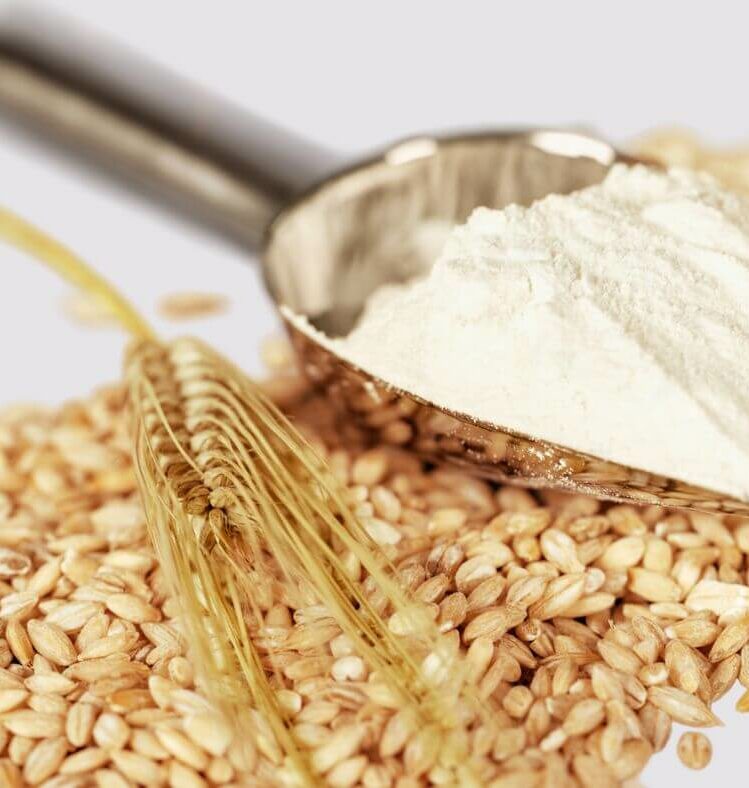
This resource is available as a downloadable file in following languages:
Key Information
- Children with wheat allergy must not be served foods made from wheat or foods that contain wheat as an ingredient. They must also avoid other grains derived from wheat including spelt and triticale.
- Some children with wheat allergy are allergic to other grains. If you have a child in your centre with wheat allergy, check with the child’s parents or carers to see which grains they can eat.
- Wheat-based products should not be removed, or banned, from the menu of a long day care centre because they contain important nutrients.
- It is important to replace wheat-based products with similar alternatives for the children with a wheat allergy.
Providing food and drinks to children with wheat allergy
This fact sheet is for cooks and chefs working in children’s education and care.
All food allergies must be taken seriously, and staff should know how to manage an allergic reaction. For information and guidance about managing food allergy, see the National Allergy Council’s Best Practice guidelines for anaphylaxis prevention and management in children’s education and care.
For more information on preparing and serving food for children with food allergies, complete the National Allergy Council’s All about Allergens for Children’s education and care course and download the National Allergy Council’s All about Allergens for Children’s education and care booklet.
The Healthy Eating Advisory Service course, Managing allergies and other dietary requirements in children’s education and care, should then be completed. You will find a micro-module specific to managing wheat allergy within this course.
Reading food labels for wheat
It is important to check the labels of all packaged foods for wheat as an ingredient. You should also check for precautionary allergen labelling for wheat, for example ‘may be present’ or ‘may contain’ statements. These products must not be given to children with wheat allergy. If you notice a food does not have a label, ask the supplier for a product information form.
You should read food labels for wheat as an ingredient each time you purchase the product, when it is delivered, and when you serve the food or before you use it in cooking for a child with wheat allergy. Check for wheat ingredients on gluten free products too.
Some ingredients made from wheat are so well processed that they may be tolerated by some children with wheat allergy. These include glucose, glucose syrup, dextrose, caramel colour, monosodium glutamate (MSG). Check with the child’s parents or carers if these ingredients are acceptable to use.
Wheat allergy and coeliac disease are different
Wheat allergy can be life-threatening. Children with wheat allergy are allergic to the protein in wheat.
Coeliac disease is not an allergy. It is a lifelong autoimmune condition. If children with coeliac disease eat gluten, they will not have an immediate life-threatening reaction. They can become very sick and develop serious long term health problems.
See the Menu planning for coeliac disease fact sheet for more information.
In Australia all packaged foods must include a food label with an ingredients list. By law, all potential food allergens (peanuts, tree nuts, seafood, fish, milk, eggs, soybeans and wheat) must be clearly identified, no matter how small the amount. If an ingredient includes wheat, this should be listed on the ingredients list. For example, if a product contains maltodextrin it should be listed as ‘maltodextrin (wheat)’ or ‘wheat maltodextrin’.
When purchasing packaged items, carefully check the food label and ingredient list for wheat products. Check these each time the product is purchased, as ingredients and processing techniques may change.
The following list (on next page) outlines foods and ingredients which include wheat and should be avoided by children with a wheat allergy.
Foods and ingredients indicating wheat:
- Wheat, wheat germ, wheat starch, wheat flour, wheat bran
- Many prepared baby foods
- Pancakes, puddings and other desserts
- Wheat based cereals (Weet-Bix™, Weeties™)
- Wheat based pasta / noodles
- Regular bread
- Baby rusks
- Burghul
- Farina flour
- Ice cream cones
- Gluten
- Baking powder
- Minchin
- Malt and malt extract
- Most custards
- Spelt bread, spelt flour
- Semolina
- Bal ahar
- Superamine
- Laubina
- Baker’s flour
- Durum flour
- Kamut
- Gravy and sauces
- Cake flour
- Couscous
- Triticale
- Crumbed or battered foods
- Baked goods (cakes, muffins, biscuits)
Foods and drinks that contain wheat, or likely to contain wheat as an ingredient, are listed below. Check the Menu planning guidelines for long day care for more information on foods to include on your menu as some of the foods listed here do not meet the menu planning guidelines.
| Food Group | Foods containing or likely to contain wheat. Always check the label. |
|---|---|
| Grains (cereal) foods | • Wheat flour, wheaten cornflour • Baking powder • Bread, bread rolls • Wraps, pita breads, flat breads • Turkish bread, Lebanese breads • Roti, naan • Crumpets, English muffins • Pancakes, pikelets • Wheat based cereals • Pasta, spaghetti • Noodles • Cous cous • Semolina • Freekeh • Many baby food products, including teething rusks • Foods made from spelt or triticale contain wheat allergens. |
| Lean meats, poultry, fish, eggs, tofu, nuts and seeds, legumes/beans | • Meat patties, burgers, sausages, meatloaf • Processed meats • Crumbed or battered products • Chicken stuffing, skin seasonings • Baked beans and other legumes in sauce |
| Milk, yoghurt, cheese and/or alternatives | • Some flavoured milks and yoghurt • Some cheese spreads |
| Cakes and biscuits | • Cakes, biscuits, muffins, slices • Pastries • Waffles • Crispbreads, dry biscuits, crackers |
| Gravies, sauces, salad dressings | • Gravy powder, liquid gravies, thickened sauces • Stock, stock cubes • Soy sauce • Worcestershire sauce • Some salad dressings • Malted vinegar |
| Soups | • Canned soups with thickener • Commercial and homemade soups with noodles or pasta |
| Jams and spreads | • Yeast spreads – Vegemite, Promite, Marmite |
| Drinks | • Malted milk powder • Soy milk with wheat-based maltodextrin • Some flavoured milks |
Planning meals for children with wheat allergy
Replacing wheat-based products on your menu
Wheat contains important nutrients for children’s growth and development such as energy, fibre, vitamins and minerals and should not be removed from the menu of a long day care centre. Children who do not have a wheat allergy should continue to be served wheat-based foods and products.
When replacing wheat-based products on your menu, remember to check if children have other food allergies. Check that the wheat replacement does not contain those allergens.
Below is a list of suggested replacements to use in place of a wheat-based food.
For food swap ideas, see the National Allergy Council’s Ingredient Substitution Tool for foods you can use to replace wheat in recipes.
Products labelled “Gluten Free” should be checked for any other wheat ingredients
| Wheat-based product | Suggested Replacement |
|---|---|
| Wheat flour, wheaten cornflour | • Alternative flours – rice, potato, soy, arrowroot (tapioca), chickpea, buckwheat, millet, quinoa • Corn flour made from corn/maize • Gluten free flour • Gluten free baking powder • Gluten free corn flour |
| Bread products | • Check which wheat free bread is usually consumed at home • Gluten free* bread |
| • Check ingredient labels carefully, as some gluten free breads contain other common allergens such as soy, milk, and egg. | |
| Wheat-based cereals | • Gluten free or wheat free cereals • Rice porridge • Infant rice cereals • Oat porridge (only if tolerated – check with parents) |
| Pasta, noodles, cous cous | • Gluten or wheat free pasta • Legume-based pasta (red lentil pasta, chickpea pasta) • 100% buckwheat noodles • Rice • Rice noodles • Rice vermicelli noodles • Quinoa • Barley • Corn-based cous cous • Polenta • Buckwheat groats |
| Crispbreads, dry biscuits, crackers | • Rice cakes • Corn thins • Rice crackers • Gluten free crackers |
| Sauces and stock | • Gluten free soy sauce • Gluten free gravy • Gluten free stock powder or liquid stock • Other gluten free sauces |
How to change recipes
Below are some examples of how to change recipes for a child who is allergic to wheat. If a separate meal is required, remember to make meals for children with allergies look like meal served to the rest of the children. This way, children with allergies will feel included at mealtimes.
| Recipe | Modification to recipe |
|---|---|
| Pasta dish | Wheat free alternatives to use: • Gluten free pasta (many products available) • Legume-based pasta (red lentil pasta, chickpea pasta) • 100% buckwheat noodles • Rice noodles • Quinoa • Barley • Corn-based cous cous • Buckwheat groats |
| Homemade muffin or other baked product | Wheat free alternatives to use: • Gluten free flour • Gluten free baking powder • Gluten free cornflour • Rice or rice flour • Soy flour • Almond flour or almond meal (if you include almond in your centre) |
Storing, making, and serving food for children with wheat allergy
Children with wheat allergy can react to very small amounts of wheat in their food.
Make sure you have good food allergen management processes to prevent the risk of cross contamination from foods that contain wheat.
This includes:
- cleaning surfaces and equipment
- separate toaster for wheat free bread
- storing food safely for allergies
- preventing cross contamination of food allergens during cooking and serving
- washing hands or changing gloves in between handling different foods.
More helpful resources and information
For more information see the National Allergy Council’s All About Allergens training for Children’s education and care and All about Allergens for Children’s education and care booklet, and the Healthy Eating Advisory Services Managing allergies and other dietary requirements in children’s education and care online course.
Further information and support
Healthy Eating Advisory Service:
- Early childhood services
- Recipes
- Menu planning guidelines for long day care
- Online module: wheat allergy
National Allergy Council:
- All About Allergens training for Children’s education and care
- All about Allergens Resource Hub (Children’s Education and Care section)
For more information please phone 1300 22 52 88 or email heas@nnf.org.au
Except where otherwise indicated, the images in this document show models and illustrative settings only, and do not necessarily depict actual services, facilities or recipients of services. This document may contain images of deceased Aboriginal and Torres Strait Islander peoples. In this document, ‘Aboriginal’ refers to both Aboriginal and Torres Strait Islander people. ‘Indigenous’ or ‘Koori/Koorie’ is retained when part of the title of a report, program or quotation. Copyright © State of Victoria 2016
Written and reviewed by dietitians and nutritionists at National Nutrition Foundation, with support from the Victorian Government.

Featured Recipes
Explore all recipes
Register your interest
"*" indicates required fields

